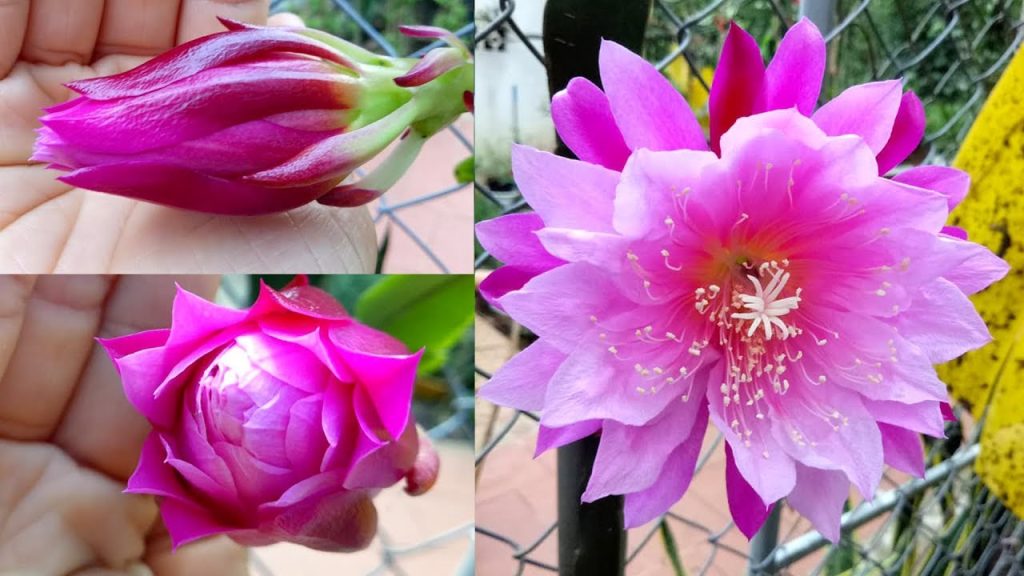The Queen of the Night (Selenicereus grandiflorus) is a stunning, rare cactus known for its large, fragrant blooms that open only at night. This breathtaking flower, with its elegant white petals, is a favorite among plant enthusiasts due to its beautiful appearance and intriguing blooming behavior. If you’re lucky enough to have this plant in your collection, here’s how you can ensure it thrives with proper care.

What is the Queen of the Night?
The Queen of the Night is a night-blooming cereus, a species of cactus native to the tropical Americas. This plant is renowned for its large, white flowers, which bloom only at night and typically last for a single evening. The stunning flower has earned its regal name due to the mesmerizing beauty it exudes under the moonlight. It’s a bit of a rarity, blooming only under specific conditions, making it a treasured sight for gardeners.
Basic Care for the Queen of the Night
To grow and care for this night-blooming beauty, it’s essential to understand its basic needs. Here are the key factors that will ensure the health and vibrancy of your Queen of the Night plant.
1. Light Requirements
The Queen of the Night prefers bright, indirect light. While it can tolerate a bit of direct sunlight, too much can lead to sunburn, especially on the delicate petals and stems. A location with morning or evening sunlight is ideal. If growing indoors, a south- or west-facing window works best. However, ensure that the plant is not exposed to harsh, midday sun for extended periods.
2. Temperature and Humidity
As a tropical cactus, the Queen of the Night thrives in warm temperatures between 65°F to 85°F (18°C to 29°C). It cannot tolerate frost, so during colder months, it should be kept indoors or in a warm greenhouse.
Humidity is also an essential factor. The Queen of the Night prefers a humid environment, so if you live in a dry area, it’s a good idea to occasionally mist the plant or place it on a humidity tray filled with water and stones. However, avoid letting the plant sit in standing water, as this can lead to root rot.
3. Watering Needs
Watering is crucial for the health of your Queen of the Night. This plant is more drought-tolerant than other cacti, so overwatering is one of the most common mistakes. Allow the soil to dry out completely between waterings. In general, water your plant every 2 to 3 weeks during the growing season (spring to summer), and reduce watering in the fall and winter when the plant is dormant.
When you do water, ensure the water is given at the base of the plant and avoid wetting the stems. This helps prevent fungal issues.
4. Soil Requirements
Like most cacti, the Queen of the Night requires well-draining soil. Use a cactus or succulent mix, or create your own by combining potting soil, sand, and perlite for good drainage. A well-drained soil mix will help prevent water from accumulating at the roots, which can lead to root rot.
If planting in a pot, ensure the pot has drainage holes to allow excess water to escape.
5. Fertilizing
To encourage healthy growth and flowering, the Queen of the Night benefits from occasional feeding. Use a balanced liquid fertilizer diluted to half strength and apply during the growing season (spring and summer). Fertilizing once a month will provide the necessary nutrients for vigorous growth and the eventual night blooms.
6. Pruning and Maintenance
Pruning is essential for maintaining the shape and health of the plant. You can remove any dead or damaged stems to encourage new growth. The plant can also be re-potted every couple of years to refresh the soil and provide more space for growth. When re-potting, choose a pot that is only slightly larger than the current one to prevent the plant from becoming waterlogged.
7. Blooming and Flowering
One of the most exciting aspects of the Queen of the Night is its flowering. The plant only blooms at night, typically in the late summer or fall, and the flowers are often open for just one night. The flowers are fragrant and incredibly beautiful, making the wait well worth it.
For the best chance at blooms, provide the plant with optimal care and ensure it is not disturbed during the blooming period. The flowers usually open at nightfall and may last until the early morning hours.
Common Problems and Solutions
While the Queen of the Night is relatively easy to care for, here are a few common issues and solutions to keep your plant healthy:
- Yellowing leaves: This can indicate overwatering or poor drainage. Ensure the soil is well-draining and that the plant isn’t sitting in water.
- No blooms: If the plant isn’t flowering, it might need more light, or it could be a sign of stress due to irregular watering or temperature fluctuations. Ensure it’s receiving enough indirect sunlight and isn’t disturbed during the blooming period.
- Pests: Check regularly for common pests such as mealybugs, aphids, and spider mites. Treat with a gentle insecticidal soap or neem oil to keep pests in check.
Conclusion
The Queen of the Night is a truly remarkable plant that rewards those who care for it with its breathtaking, fragrant flowers. By following the basic care tips outlined above—providing it with bright, indirect light, warm temperatures, well-draining soil, and the right watering regimen—you can enjoy the beauty of this exquisite cactus for years to come. Treat it right, and you’ll be rewarded with one of nature’s most incredible night-time displays.



